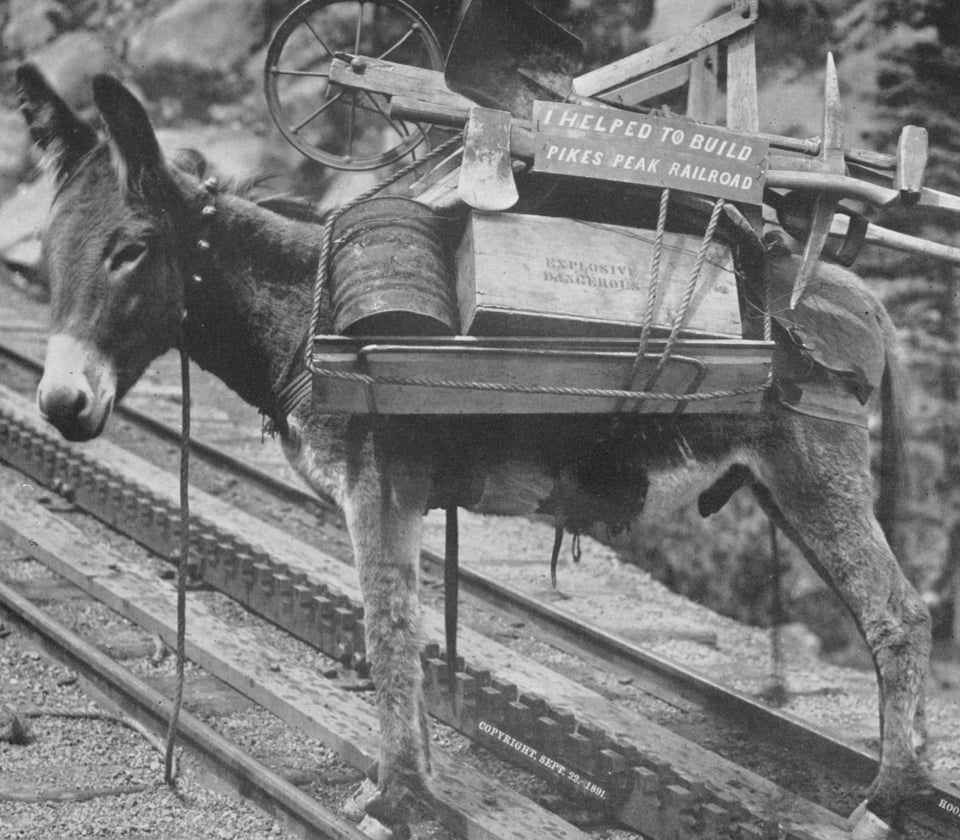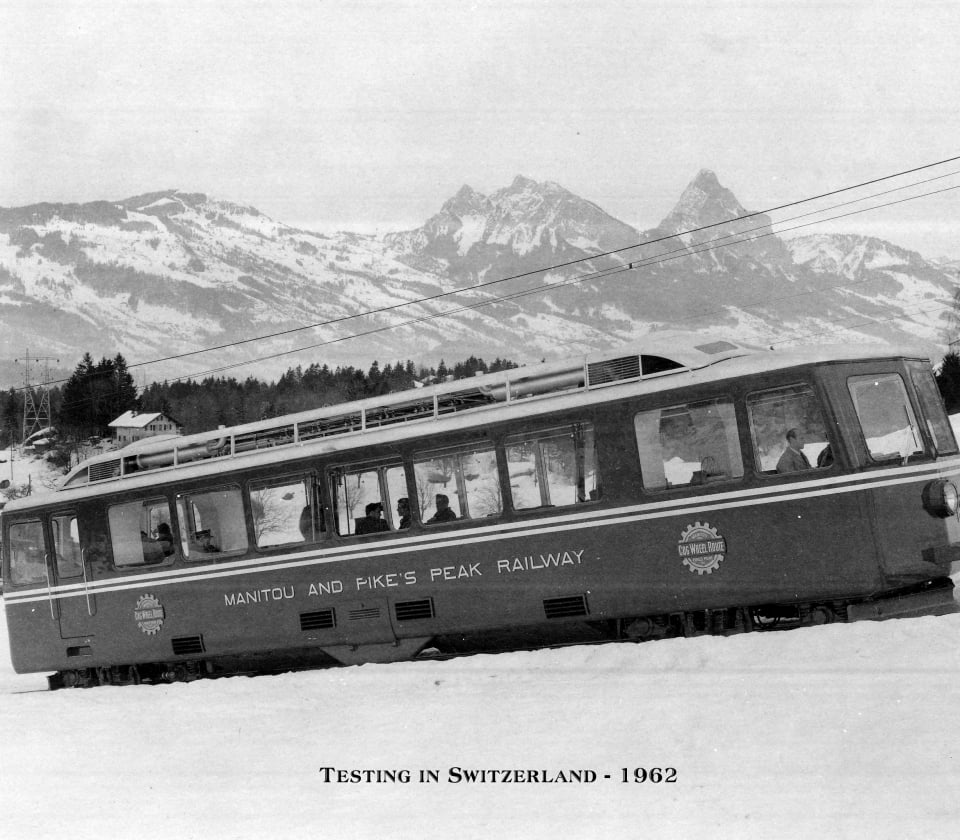The Early Days
In 1889, the Manitou and Pikes Peak Railway Company was founded and track construction began right away. This was the Age of Steam, and in 1890, three locomotives from Baldwin Locomotive Works in Philadelphia, Pennsylvania were delivered. Service was limited in the early days to the Halfway House Hotel. A total of six locomotives were in use during the steam era, and while they are not in use at the moment, locomotive #2 can be seen on display in downtown Manitou Springs, #4 at the Grand Canyon Railway, and #5 at The Broadmoor Hotel.
First Summit
A church choir from Denver boarded the first passenger train the afternoon of June 30, 1891, and made it to the summit of Pikes Peak by train. This was actually the second attempt, a previously scheduled group of dignitaries had to turn back earlier in the day because of a rock slide at around 12,000 feet.
A New Era
Spencer Penrose, owner of the Broadmoor Hotel, acquired the railway in 1925 to add to the Broadmoor family, and in the late 1930s, gasoline and diesel powered locomotives were introduced. Wanting to carry fewer passengers during the slow parts of the season, there was an effort to build a compact, self-contained railcar up for the job, culminating in rail car No. 7: a gas-powered, 23-passenger unit, which made its first run on June 16, 1938, and is believed to be the first rack rail car ever built in the world. Within a year No. 8, possibly the world’s first diesel-electric cog locomotive, was delivered from the General Electric Company. Goodbye time-consuming water stops and the back-breaking shoveling of coal. Along with “Streamliner” coaches, locomotive Nos. 8, 9, 10, 11, and 12 formed the backbone of the railway fleet from 1940 to 1965.


